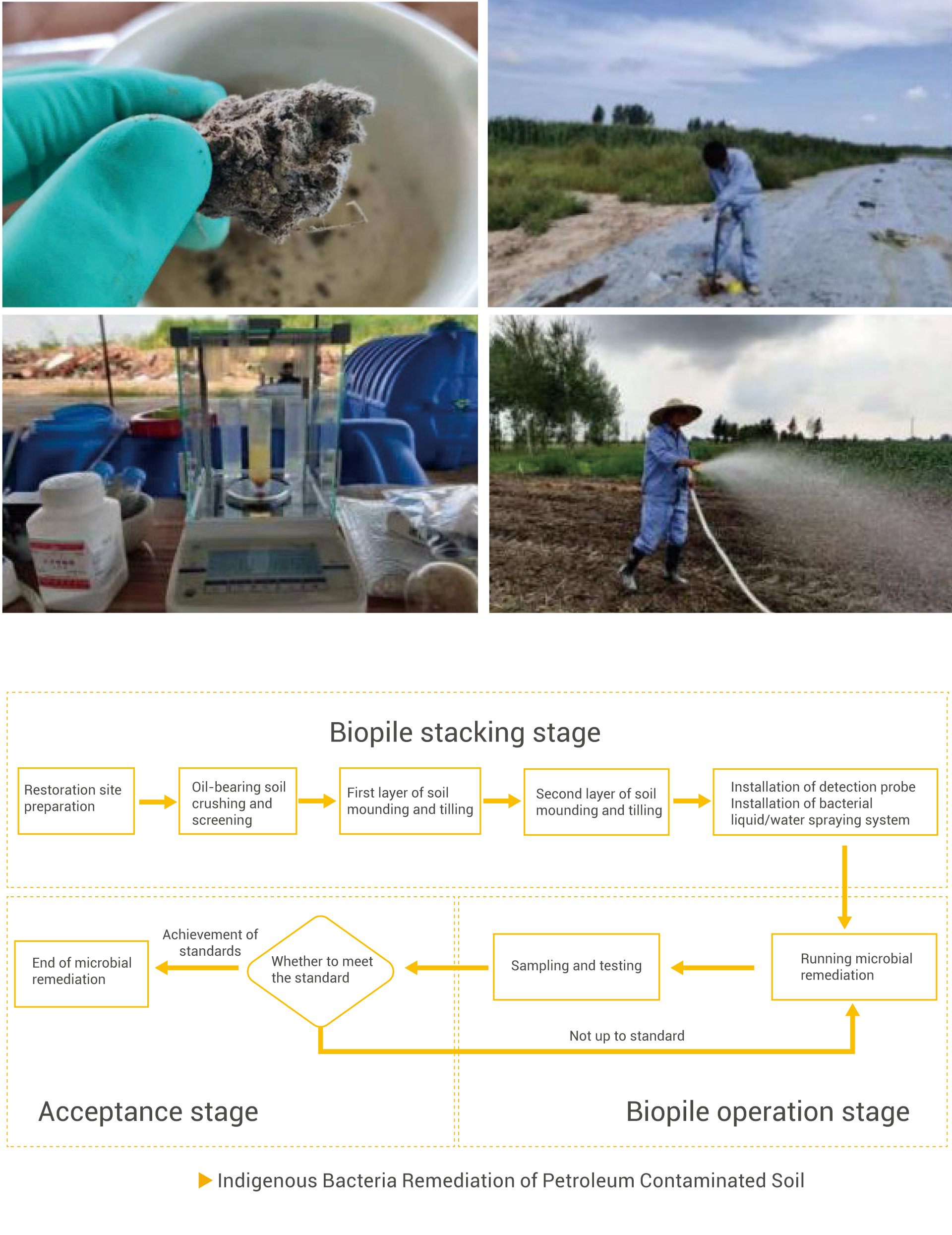Business Field
-
Technologies
-
Process Technologies
-
Flue Gas Treatment
-
DeSOx Technology
- Wet DeSOx and Dust Collection Technology
- M·Dwave® reverse jetting technology
- M·Sulfurp® acid gas treatment/waste acid recovery technology
- M·Sorb® sulfur dioxide recovery technology
- M·HyPerO®Hydrogen Peroxide Oxidation DeSOx Technology
- M·SWFGD seawater desulfurization technology
- M·SemiD® semi-dry desulfurization technology
- DeNOx Technology
- Decarbonization Technology
- Colored Plume Elimination Technology
- VOCs Treatment Technology
- H2S Removal Technology
-
DeSOx Technology
- Waste Water Treatment
-
Flue Gas Treatment
- Internet of Things
-
Process Technologies
- Materials
- Products
- Services
Microorganisms For Petroleum Contaminated Soil Remediation
For Enland microbial remediation technology for petroleum contaminated soil, indigenous bacterial agents, slow-release oxygen agents, nutrients, soil amendments and the contaminated soil are fully mixed and then transferred to the remediation yard where the petroleum hydrocarbons in the contaminated soil will be rapidly degraded with the help of such technologies as bio-stimulation, bio-addition and slow-release oxygen. The petroleum hydrocarbons in the treated soil is less than five in ten thousand.
Technical Advantages
- Compound indigenous bacteria: The compound indigenous bacteria used are from petroleum hydrocarbon contaminated soil in many places, and the treatment efficiency is high;
- Slow release oxygen technology: It can significantly reduce the treatment costs;
- Bio-stimulation technology: Indigenous microorganisms are stimulated to reproduce and grow by improving and correcting the environmental geochemical conditions, eventually enhancing their activity;
- Bio-addition technology: The indigenous bacteria decompose different kinds of petroleum hydrocarbon efficiently, so that the soil can be better remedied.



